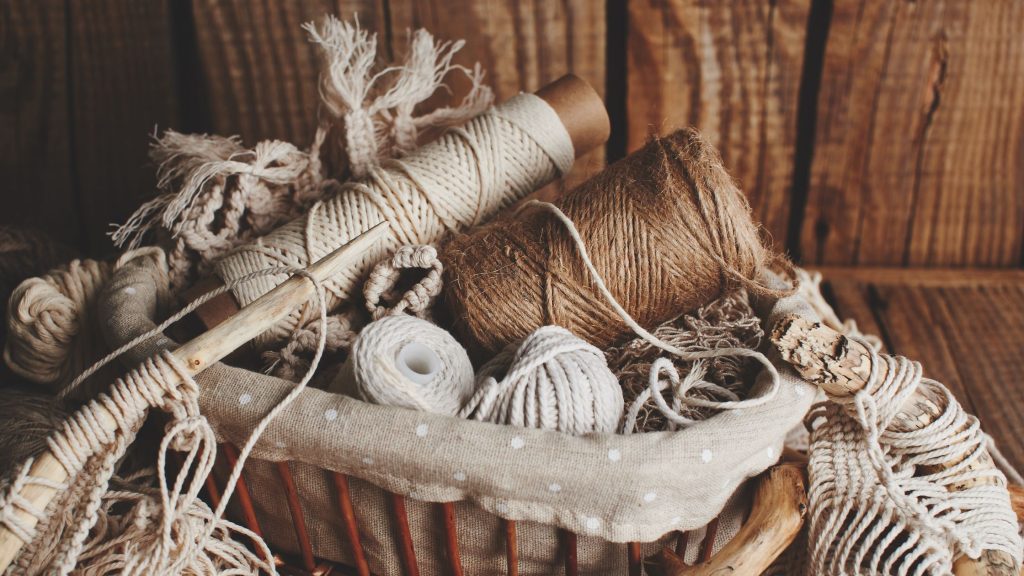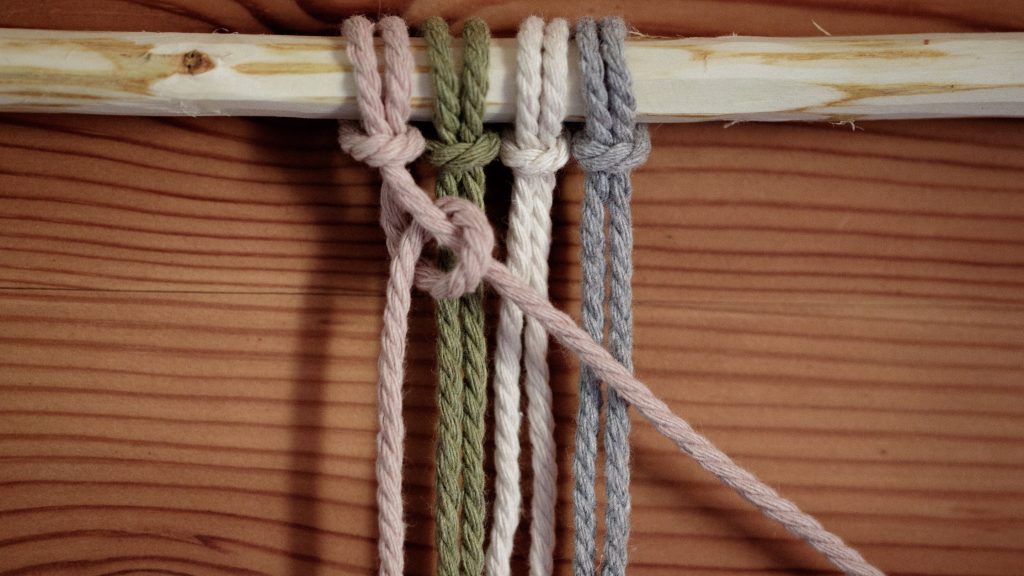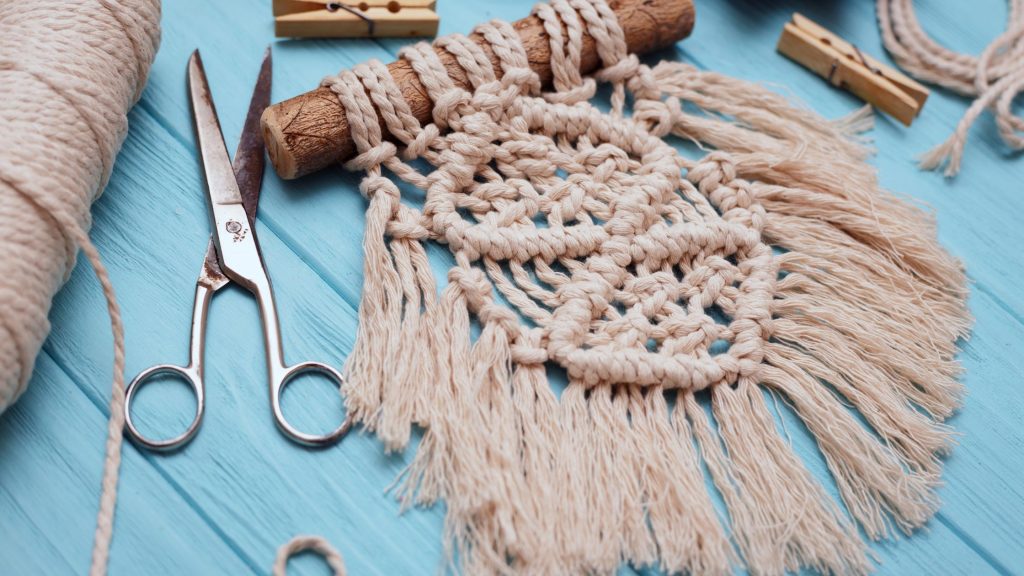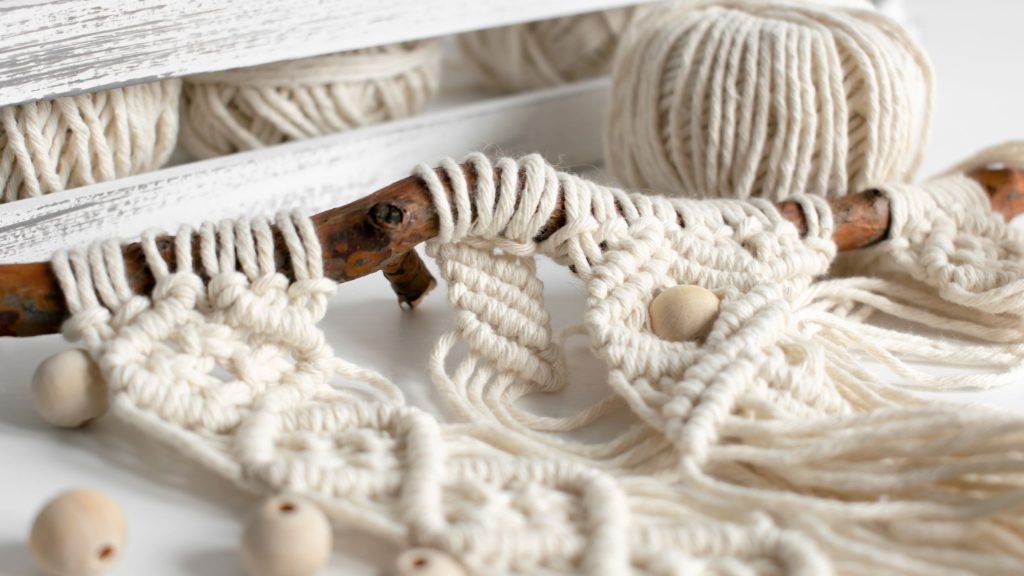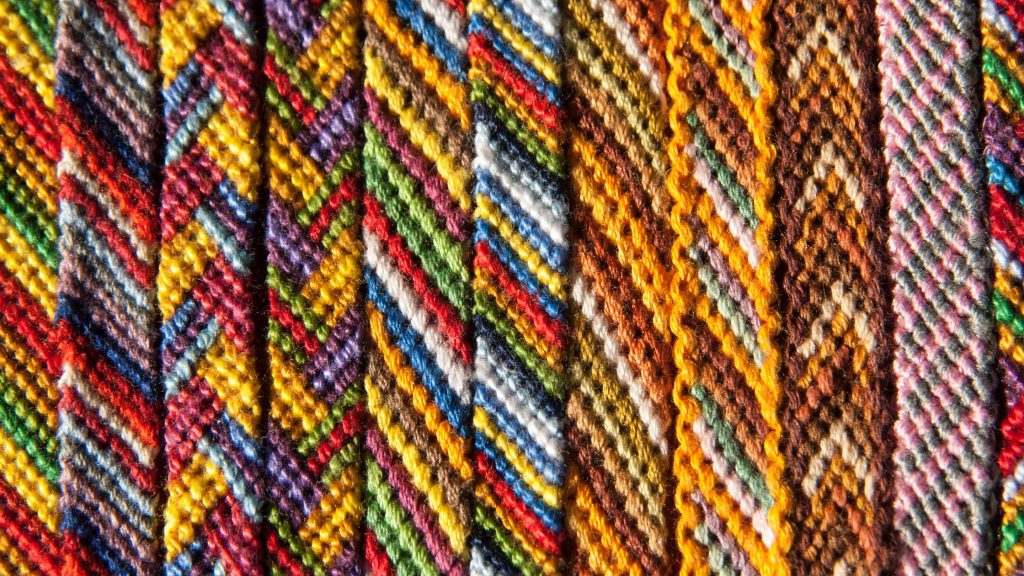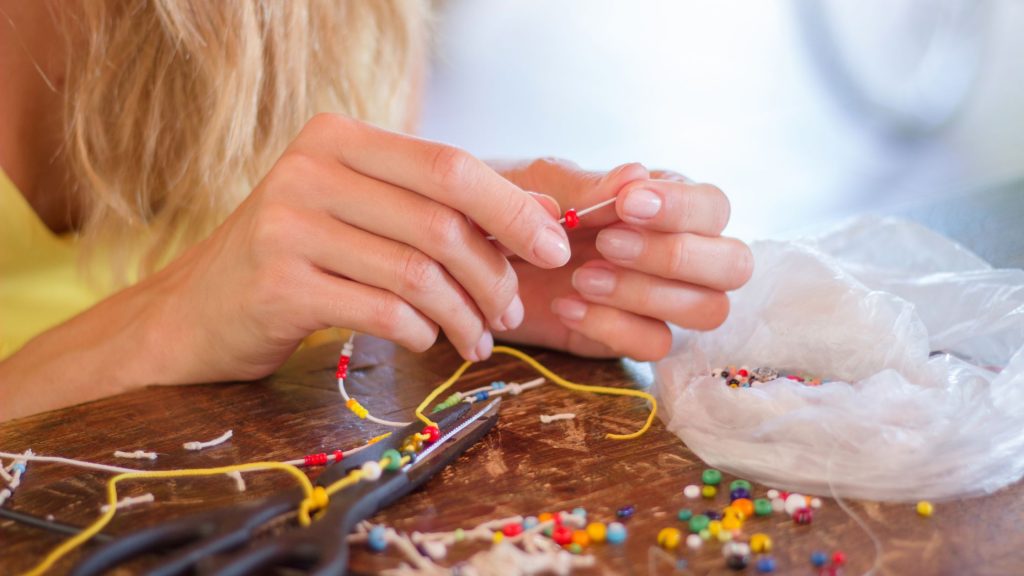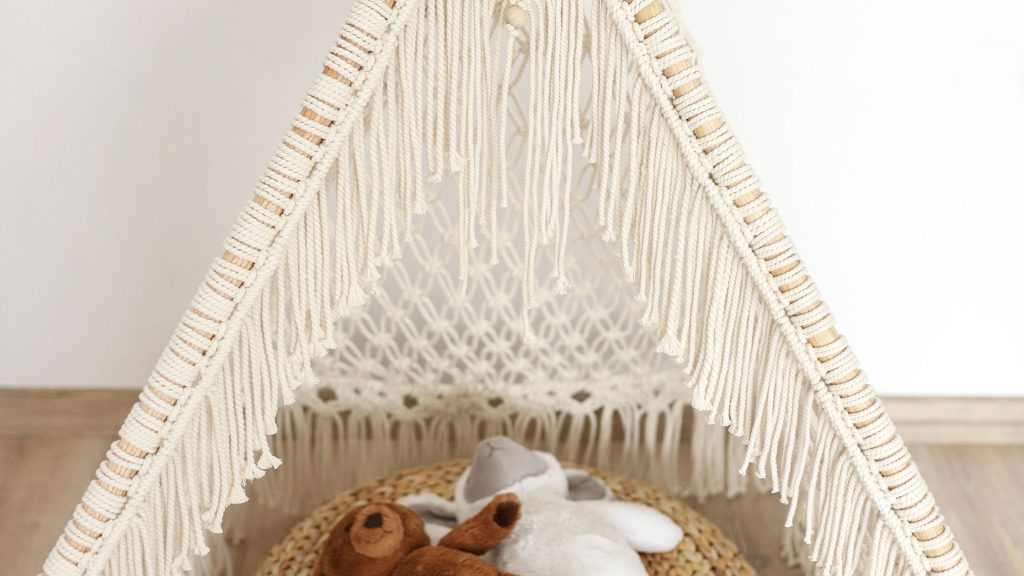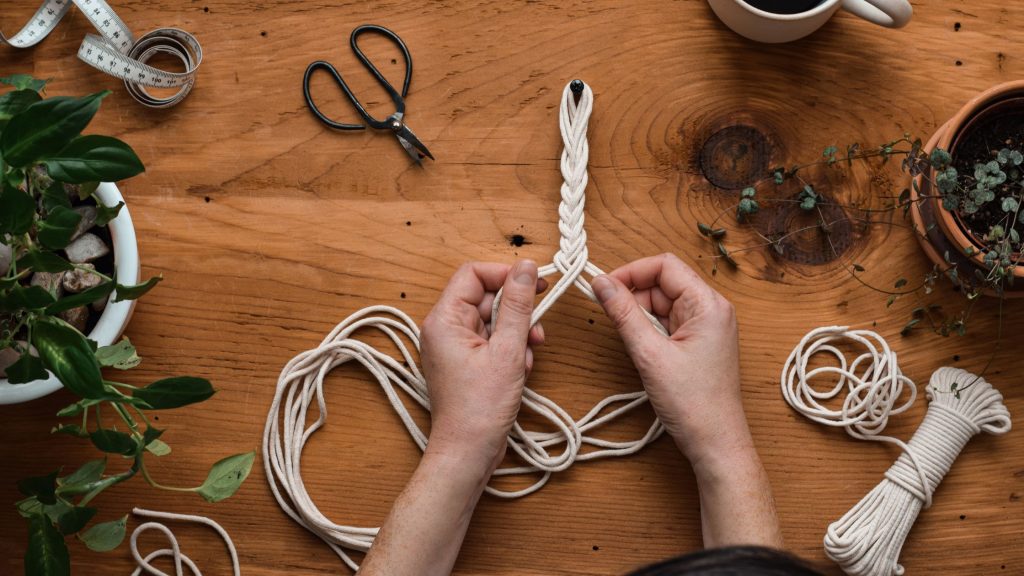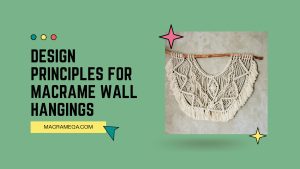Are you looking to add a unique twist to macrame projects? If so, you’ve come to the right place! In this article, we will explore different techniques and ideas that will help you add a twist or spin to your macrame creations. Whether you’re a seasoned macrame artist or just starting out, these tips and tricks will take your projects to the next level, allowing you to infuse your own personal style and creativity into each knot.
Add A Unique Twist To Macrame Projects
Get ready to embark on a macrame adventure and let your imagination run wild!
Types of Macrame Projects
Wall Hangings
Wall hangings are one of the most popular macrame projects, and for good reason. They are versatile, easy to make, and can add a touch of bohemian beauty to any space. Whether you choose to create a simple geometric design or a more intricate pattern, wall hangings allow you to showcase your creativity and personalize your home decor.
Plant Hangers
Macrame plant hangers are not only practical but also aesthetically pleasing. They provide a unique and stylish way to display your favorite plants, both indoors and outdoors. By using different knotting techniques and incorporating various colors and textures, you can create plant hangers that complement any interior or garden.
Jewelry
Macrame jewelry allows you to wear your love for this craft wherever you go. From bracelets to necklaces, earrings to anklets, the possibilities are endless. With just a few basic knots and some colorful cord, you can create stunning pieces that express your personal style and make a fashion statement.
Keychains
If you’re looking for a small, quick, and fun macrame project, keychains are the way to go. They make great gifts and are practical accessories for your keys. You can play around with different knotting techniques and add beads, charms, or feathers to create unique and eye-catching keychains.
Macrame Bags
Macrame bags are not only trendy but also functional. Whether you’re heading to the beach, going grocery shopping, or simply running errands, a macrame bag adds a bohemian touch to your outfit and provides ample space for your belongings. You can experiment with different patterns, sizes, and cord thicknesses to create a bag that suits your needs and personal style.
Macrame Home Decor
From macrame wall art to dream catchers, macrame home decor items can transform any space into a cozy and inviting sanctuary. By incorporating different knotting techniques, colors, and materials, you can create unique pieces that reflect your personality and add a touch of boho-chic to your living space.
Macrame Curtains
Macrame curtains are a beautiful way to dress up your windows and add a touch of elegance to any room. Whether you prefer a more intricate design or a simple pattern, macrame curtains allow you to play with different knotting techniques and experiment with different lengths and textures. They create a soft and dreamy ambiance while still allowing natural light to filter through.
Macrame Hammocks
If you’re looking for the ultimate relaxation spot, a macrame hammock is the perfect choice. It combines the comfort of a traditional hammock with the beauty and craftsmanship of macrame. By using sturdy cord and incorporating different knotting techniques, you can create a stylish and comfortable hammock that will be the envy of all your friends.
Macrame Belts
Macrame belts are not only functional but also fashionable. They can add a bohemian touch to any outfit and cinch in your waist for a flattering silhouette. By experimenting with different knotting techniques and incorporating beads or charms, you can create belts that are unique and eye-catching.
Feather Macrame Projects
Feathers add a whimsical and ethereal touch to macrame projects. Whether you choose to incorporate them into wall hangings, dream catchers, or jewelry, feathers create movement and texture. By combining macrame knots with feathers, you can create stunning pieces that evoke a sense of wonder and beauty.
Choosing the Right Materials
Macrame Cord
The type of macrame cord you choose can greatly impact the outcome of your project. There are various types of cord available, such as cotton, jute, nylon, and hemp. Each cord has its own unique characteristics, including thickness, softness, and durability. When selecting a macrame cord, consider the texture you want to achieve and the purpose of your project. Thicker cords are suitable for larger, more structured pieces, while thinner cords are better for delicate jewelry or intricate patterns.
Macrame Rings and Hoops
Macrame rings and hoops are essential for creating circular designs and adding structure to your projects. They come in various sizes and materials, such as metal or wood. When choosing rings and hoops, consider the size of your project and the desired outcome. Smaller rings are ideal for jewelry or small wall hangings, while larger hoops are suitable for macrame dream catchers or plant hangers.
Beads and Charms
Beads and charms are great for adding a pop of color and dimension to your macrame projects. They come in a wide range of materials, sizes, and shapes, allowing you to customize your pieces and make them truly unique. Whether you want to add a single bead as a focal point or create intricate patterns using multiple beads, incorporating them into your macrame projects will add a touch of style and personalization.
Feathers and Tassels
Feathers and tassels can bring movement, texture, and a bohemian vibe to your macrame creations. Depending on the desired effect, you can choose from a variety of feathers, such as peacock, pheasant, or faux feathers. Tassels, on the other hand, can be made using macrame cord or embroidery thread. By attaching feathers or tassels to your macrame projects, you can create eye-catching pieces that showcase your creativity and love for nature.
Wooden Dowels and Branches
Wooden dowels and branches are commonly used as hanging bars for macrame wall hangings or plant hangers. They add a natural and rustic element to your projects and provide a sturdy base for your macrame creations. When selecting wooden dowels or branches, ensure they are smooth, sturdy, and free from splinters. They should be proportional to the size of your project and complement the overall aesthetic.
Macrame Needle or Awl
A macrame needle or awl can be a handy tool for creating intricate patterns or adding decorative elements to your projects. The needle or awl helps you guide the cords through the knots and creates clean and precise lines. Whether you’re working on a complex macrame design or adding intricate details to your jewelry, having a macrame needle or awl in your toolkit can greatly enhance your creativity and precision.
Decorative Elements
Decorative elements, such as shells, beads, ribbons, or fabric, can be used to personalize and embellish your macrame projects. These elements can be incorporated into your knots or attached to your finished pieces. By adding decorative elements, you can create unique and eye-catching designs that reflect your personal style and add a touch of whimsy to your macrame creations.
Experimenting with Different Macrame Knots
Square Knot
The square knot is one of the most basic and versatile macrame knots. It is created by crossing two cords and tying them in a simple overhand knot. The square knot can be used to create a variety of patterns, such as diagonal stripes, chevron designs, or repeating geometric shapes. By alternating the direction of the square knots and varying the number of cords used, you can create complex and intricate macrame designs.
Half Square Knot
The half square knot is similar to the square knot but is only tied in one direction. It creates a diagonal pattern and is often used to create polka dot or checkerboard designs. By repeating the half square knot and alternating the direction, you can create unique and visually appealing macrame patterns.
Double Half Hitch
The double half hitch is a knot that is created by looping one cord around a base cord and pulling it through the loop. It is commonly used in macrame to create a textured and braided effect. By repeating the double half hitch and varying the spacing between the knots, you can create intricate and visually interesting macrame designs.
Clove Hitch
The clove hitch is a decorative macrame knot that is created by crossing one cord over another and wrapping it around the second cord. It is commonly used to create fringes, tassels, or decorative elements. By repeating the clove hitch and varying the number of wraps, you can create unique and eye-catching macrame designs.
Josephine Knot
The Josephine knot is a complex and intricate macrame knot that is created by folding one cord into a loop and wrapping the remaining cords around it. It creates a beautiful and symmetrical knot that is often used as a focal point in macrame jewelry or wall hangings. By experimenting with different cord thicknesses and varying the number of wraps, you can create stunning and visually appealing macrame designs.
Lark’s Head Knot
The lark’s head knot is a simple yet versatile macrame knot that is created by folding a cord in half and passing the looped end over a base cord. It is commonly used to attach cords to rings or hoops and create the foundation for macrame projects. By repeating the lark’s head knot and varying the spacing and tension, you can create unique and visually interesting macrame designs.
Rya Knot
The rya knot is a decorative macrame knot that is created by folding a group of cords in half and wrapping them around a base cord. It creates a looped fringe and adds texture and dimension to your macrame projects. By varying the length and number of cords used, you can create unique and visually appealing macrame designs.
Berry Knot
The berry knot is an intricate macrame knot that is created by folding a cord in half, forming a loop, and passing the ends through the loop. It creates a cluster of loops that resemble berries and adds a decorative touch to your macrame projects. By repeating the berry knot and varying the spacing and tension, you can create unique and visually interesting macrame designs.
Chinese Crown Knot
The Chinese crown knot is a decorative macrame knot that is created by folding a cord in half, forming a loop, and passing the ends through the loop multiple times. It creates a beautiful and symmetrical knot that is often used as a focal point in macrame jewelry or wall hangings. By experimenting with different cord thicknesses and varying the number of wraps, you can create stunning and visually appealing macrame designs.
Overhand Knot
The overhand knot is one of the simplest macrame knots, and it is often used as a starting point or to secure cords in place. It is created by tying a simple knot with one cord. While it may seem basic, the overhand knot can be used creatively to create patterns, textures, or decorative elements in your macrame projects.
Adding Fringes and Tassels
Creating Fringes at the Bottom
Adding fringes to the bottom of your macrame projects can create a beautiful and bohemian look. To create fringes, cut several strands of cord to your desired length and attach them to the bottom of your project using the lark’s head knot or the double half hitch knot. You can vary the thickness, length, and color of the fringes to suit your personal style and the overall design of your macrame piece. Fringes can create movement, texture, and add a touch of whimsy to your macrame projects.
Making Tassels and Attaching
Tassels are another great way to add a decorative touch to your macrame projects. To make tassels, cut a long piece of cord and fold it in half. Tie a separate piece of cord around the folded end, leaving a small loop at the top. Trim the ends of the folded cord to create the tassel. Attach the tassel to your macrame project using the lark’s head knot or by incorporating it into your knots. Tassels can be customized with beads, charms, or feathers to create unique and eye-catching macrame designs.
Incorporating Different Colors
Using different colors in your fringes and tassels can create contrast, dimension, and visual interest in your macrame projects. You can choose complementary or contrasting colors to create a striking effect. By using multiple colors, you can create gradients, ombré effects, or patterns in your fringes and tassels. Experiment with different color combinations to find what best suits your personal style and the overall aesthetic of your macrame piece.
Varying Tassel Lengths
Varying the lengths of your fringes and tassels can create a dynamic and visually appealing macrame design. You can create a cascading effect by gradually increasing or decreasing the length of the fringes or tassels from one end to the other. Alternatively, you can create a more balanced look by keeping the lengths uniform throughout. By playing with different lengths, you can add movement, texture, and a touch of personalization to your macrame projects.
Combining Macrame with Other Crafts
Embroidery
Combining macrame with embroidery allows you to add intricate details and patterns to your macrame projects. You can use embroidery techniques, such as satin stitch, backstitch, or french knots, to create designs, letters, or images on your macrame pieces. Embroidery can add a delicate and whimsical touch to your macrame projects, making them truly one-of-a-kind.
Weaving
Weaving can be seamlessly integrated with macrame to add texture and dimension to your projects. By using a weaving technique, you can incorporate different types and colors of yarn or fabric strips into your macrame design. This adds visual interest and creates a unique and eye-catching piece. Weaving also allows you to play with different patterns and techniques, such as tabby weave or soumak weave, to create intricate and visually appealing macrame projects.
Crochet
Combining macrame with crochet allows you to add patterns, textures, and motifs to your macrame projects. You can crochet intricate lace trimmings, flowers, or edgings and attach them to your macrame pieces. Crochet can add a soft and delicate touch to your macrame projects, creating a beautiful contrast between the sturdy cord and the softness of the crochet work.
Knitting
Knitting can be incorporated into macrame projects to add warmth, softness, and intricate patterns. By knitting panels or strips, you can create cozy blankets, scarves, or cushion covers and then integrate them into your macrame project. Knitting adds a soft and cozy element to the macrame design, making it perfect for home decor or winter accessories.
Braiding
Braiding can be combined with macrame to create unique and intricate designs. By incorporating braided sections into your macrame project, you can add texture and visual interest. Braids can be made with different materials, such as cord, fabric strips, or yarn, and can be used to create handles, straps, or decorative elements.
Beadwork
Beadwork can be combined with macrame to add a touch of sparkle and elegance to your projects. By incorporating beads into your macrame knots or using them to create patterns, you can create stunning and eye-catching macrame designs. Beads come in a variety of shapes, sizes, and colors, allowing you to personalize your macrame projects and make them truly unique.
Leatherwork
Leatherwork can be seamlessly integrated with macrame to add a rustic and rugged touch to your projects. By incorporating leather straps, accents, or fringes, you can create a bohemian and earthy vibe. Leather also adds durability and longevity to your macrame pieces, making them perfect for outdoor or heavy-use items.
Pom-Pom Making
Pom-pom making can be combined with macrame to add a playful and whimsical touch to your projects. By attaching pom-poms to your macrame creations, you can create a fun and colorful piece that showcases your creativity and adds a touch of joy to your home decor or accessories.
Macrame and Painting
Combining macrame with painting allows you to add unique and colorful designs to your macrame projects. By using fabric paint or acrylic paint, you can create patterns, images, or abstract designs on your macrame pieces. Painting adds another layer of creativity and personalization to your macrame projects, making them truly one-of-a-kind.
Utilizing Different Macrame Techniques
Macrame Wrapping
Macrame wrapping involves using cords to wrap around a central object, such as a stone, a ring, or a dowel. This technique creates a decorative and secure way to attach cords and create a unique design. By varying the wrapping pattern and adding different colors or textures of cord, you can create visually interesting and eye-catching macrame projects.
Macrame Braiding
Macrame braiding involves intertwining multiple cords to create unique patterns and textures. This technique adds depth, dimension, and visual interest to your macrame projects. By experimenting with different braiding techniques, such as fishtail braid or herringbone braid, you can create stunning and intricate macrame designs.
Macrame Ropework
Macrame ropework involves using various knotting techniques to create a structure or shape using cords. This technique allows you to create macrame projects with a three-dimensional or sculptural look. By incorporating ropework into your macrame projects, you can add depth, texture, and visual interest.
Macrame Netting
Macrame netting involves creating a net-like structure using knots and cords. This technique is often used to create macrame bags, hammocks, or hanging chairs. By varying the size and tension of the knots, you can create different patterns and textures. Macrame netting adds a unique and bohemian touch to your projects while still providing functionality and durability.
Macrame Twining
Macrame twining involves twisting or twining two cords together to create a spiral or twisted effect. This technique adds movement, texture, and visual interest to your macrame projects. By playing with different cord thicknesses, colors, and knotting techniques, you can create stunning and visually appealing macrame pieces.
Playing with Colors and Textures
Choosing a Color Scheme
Choosing a color scheme is an important step in creating visually appealing and harmonious macrame projects. You can choose a monochromatic color scheme by using varying shades of one color, creating a cohesive and elegant look. Alternatively, you can opt for a complementary color scheme by using colors that are opposite each other on the color wheel, creating a vibrant and eye-catching contrast. Analogous color schemes involve using colors that are next to each other on the color wheel, creating a harmonious and soothing effect. Experiment with different color schemes to find the one that best suits your personal style and the mood you want to create.
Using Different Shades and Tones
Using different shades and tones of the same color can add depth, dimension, and visual interest to your macrame projects. By incorporating light and dark shades, you can create a gradient effect that adds movement and texture to your pieces. Tones can also add a subtle and sophisticated touch to your macrame projects. By combining different shades and tones, you can create visually appealing and dynamic macrame designs.
Incorporating Colorful Beads
Adding colorful beads to your macrame projects can create pops of color and add a touch of playfulness to your designs. Beads come in various shapes, sizes, and colors, allowing you to customize your macrame pieces and make them truly unique. By using beads in different ways, such as incorporating them into knots, creating patterns, or adding them as charms, you can create stunning and eye-catching macrame designs.
Experimenting with Ombré Technique
The ombré technique involves using different shades of the same color in a gradient pattern. By gradually transitioning from one shade to another, you can create a soft and gradual color change in your macrame projects. The ombré technique adds depth, dimension, and visual interest, making your macrame pieces stand out. You can experiment with different color combinations and techniques to create unique and visually appealing macrame designs.
Using Different Thickness of Cords
Using cords of different thicknesses can create visual interest and texture in your macrame projects. Thicker cords add structure and stability to larger pieces, while thinner cords are more suitable for delicate and intricate designs. By combining different thicknesses of cords, you can create contrast, depth, and visual appeal in your macrame projects. Experiment with different cord thicknesses to find the combination that best suits your desired outcome.
Exploring Unconventional Designs and Shapes
Geometric Designs
Geometric designs in macrame allow you to create clean lines, repetitive patterns, and symmetrical shapes. From simple triangles and squares to complex polygons, geometric designs can add a modern and minimalist touch to your macrame projects. By combining different knots and knotting techniques, you can create visually striking and architecturally inspired macrame pieces.
Circular and Curved Patterns
Circular and curved patterns in macrame can add a soft and flowing element to your projects. From circular wall hangings to curved plant hangers, these designs create a sense of movement and grace. By incorporating different knots and experimenting with tension, you can create unique and visually appealing macrame pieces.
Abstract and Freeform Shapes
Abstract and freeform shapes in macrame allow you to unleash your creativity and create unique and unconventional designs. From asymmetrical wall hangings to freeform sculptures, abstract macrame adds a touch of artistic expression to your projects. By experimenting with different knotting techniques, varying cord thickness, and playing with color and texture, you can create stunning and visually captivating macrame designs.
3D Macrame Projects
3D macrame projects add a sculptural and dimensional element to your macrame creations. By incorporating techniques such as macrame ropework or macrame netting, you can create macrame pieces that stand out and grab attention. Adding depth, movement, and texture, 3D macrame projects allow you to push the boundaries of traditional macrame and create truly innovative and visually striking designs.
Layering and Dimensional Macrame
Layering and dimensional macrame involve adding depth, texture, and visual interest through the use of multiple layers or components. By combining different macrame techniques, incorporating different materials, or varying the length and size of cords, you can create macrame pieces that stand out and are visually captivating. Layering and dimensional macrame allow you to create unique and eye-catching designs that will be the focal point of any space.
Adding Personal Touches
Macrame Initials or Monograms
Adding your initials or monograms to your macrame projects adds a personal and meaningful touch. You can create letter patterns using different knots or incorporate metal or wooden letters into your macrame designs. By adding your initials or monograms, you make your macrame pieces truly one-of-a-kind and reflective of your personal style.
Incorporating Birthstones or Gemstones
Incorporating birthstones or gemstones into your macrame projects adds a touch of beauty and personalization. Birthstones are associated with each month of the year and can be incorporated into your macrame jewelry or home decor items. Gemstones, on the other hand, have unique properties and meanings, allowing you to infuse positive energy and intention into your macrame pieces.
Symbols and Significances
Incorporating symbols and significances into your macrame designs adds a layer of depth and personal meaning. Whether it’s a religious, spiritual, or cultural symbol, adding it to your macrame projects allows you to express your beliefs and values. By researching and selecting symbols that resonate with you, you make your macrame pieces meaningful and reflective of your personal journey.
Customizing with Ribbons or Fabric
Customizing your macrame projects with ribbons or fabric adds a soft and delicate touch. You can incorporate ribbons into the knots or attach fabric strips to create unique and eye-catching designs. Ribbons or fabric can add color, texture, and movement to your macrame pieces, making them truly unique and reflective of your personal style.
Incorporating Personal Quotes or Phrases
Incorporating personal quotes or phrases into your macrame projects adds a touch of inspiration and motivation. Whether it’s a favorite quote, a meaningful phrase, or a mantra, adding it to your macrame designs allows you to showcase your personality and values. By using different knotting techniques or attaching metal or wooden tags, you can create macrame pieces that inspire and uplift.
Seeking Inspiration and Learning from Others
Joining Macrame Communities
Joining macrame communities, whether in-person or online, allows you to connect with fellow macrame enthusiasts and learn from their experiences. Macrame communities provide a supportive and inspiring environment where you can share your work, ask for advice, and gain new ideas. By participating in discussions and workshops, you can expand your knowledge, improve your skills, and find inspiration for your macrame projects.
Following Macrame Artists on Social Media
Following macrame artists on social media platforms, such as Instagram or Pinterest, allows you to discover new techniques, designs, and trends. Macrame artists often share their work, tutorials, and tips, providing you with a constant source of inspiration and learning. By exploring different styles and following the journeys of macrame artists, you can find your own unique voice and create macrame projects that truly reflect your personality and style.
Participating in Macrame Workshops
Participating in macrame workshops, whether in-person or online, is a great way to learn new techniques, improve your skills, and connect with like-minded individuals. Workshops often provide hands-on guidance, step-by-step instructions, and the opportunity to ask questions and receive feedback. By immersing yourself in a learning environment, you can gain valuable insights and techniques that will enhance your macrame projects.
Exploring Macrame Books and Online Tutorials
Exploring macrame books and online tutorials is a convenient and accessible way to learn new techniques and gain inspiration for your macrame projects. Books provide comprehensive guides, step-by-step instructions, and visual references that allow you to learn at your own pace. Online tutorials, on platforms such as YouTube or blogs, provide video demonstrations, tips, and tricks that make learning macrame fun and engaging. By exploring different resources, you can expand your knowledge, improve your skills, and find new ideas for your macrame creations.



